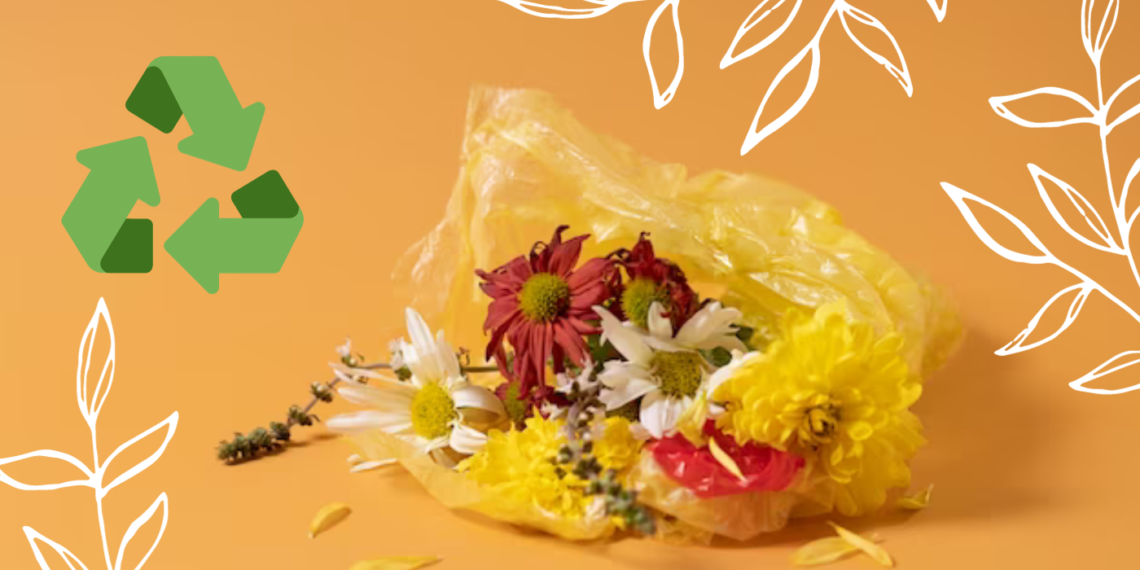The main motivation behind celelebrating Eco-Friendly Diwali is to save environment. By adopting eco-friendly alternatives, such as using traditional diyas and opting for natural materials for decorations, we can reduce our carbon footprint and contribute to a greener future. Additionally, celebrating an eco-friendly Diwali also sets a positive example for future generations, inspiring them to prioritize environmental conservation in their own lives.
7 Eco-Friendly Diwali Tips for Your Family
Embrace Traditional Diyas:

One of the best ways to have an eco-friendly Diwali is to embrace the charm of traditional clay diyas. These small, handcrafted lamps not only add a warm and inviting glow to your home but also reduce the environmental impact. Unlike plastic and electric lights, clay diyas are biodegradable and produce minimal waste. By lighting traditional diyas, you connect with the essence of Diwali and support local artisans who craft these beautiful pieces.
This Diwali, let’s make a conscious effort to embrace traditional earthen diyas. These eco-friendly alternatives not only reduce our environmental footprint but also add an authentic touch to our Diwali celebrations.
Here are some tips for using traditional earthen diyas:
-
Choose earthen diyas made from local clay. This supports local artisans and reduces the environmental impact of transportation.
-
Use natural oil, such as ghee or vegetable oil, to light your diyas. Avoid using synthetic oils, which can release harmful chemicals into the air.
-
Dispose of used diyas responsibly. Once the oil has burned out, allow the diyas to cool completely. Soak them in water to soften the clay, and then crush them into small pieces. The clay can be used as fertilizer or returned to the earth.
By embracing traditional earthen diyas, we can celebrate Diwali in a way that respects our environment and honors the festival’s rich traditions.
Go Green with Decorations:

Decking your home with green decorations is an excellent way to celebrate eco-friendly Diwali. Instead of plastic or disposable decor, use natural elements like marigold flowers, mango leaves, or bamboo. You can create stunning torans (door hangings) and beautiful garlands that not only look festive but also decompose naturally, leaving no trace of waste.
Another eco-friendly decoration idea is to use reusable or recyclable materials. You can create paper lanterns, banners, and other decorations from materials that can be easily recycled. This reduces the amount of waste generated during Diwali and promotes a more sustainable celebration.
Additionally, you can use LED lights instead of traditional incandescent bulbs. LED lights are energy-efficient and have a longer lifespan, reducing electricity consumption. They also come in a variety of colors and designs, adding a modern touch to your traditional Diwali decorations.
By going green with your decorations, you not only make your home look beautiful but also contribute to a cleaner and healthier environment. It’s a wonderful way to celebrate Diwali while being mindful of the impact your choices have on the world around you.
Go for Bio-degradable Rangoli:

Rangoli is a vibrant and essential part of Diwali. Instead of using synthetic and non-biodegradable colors, opt for eco-friendly rangoli materials. You can create stunning rangoli designs using flower petals, rice flour, or natural colors. These alternatives not only add an artistic touch to your celebrations but also minimize harmful chemicals in the environment.
Here are some tips for creating an eco-friendly rangoli:
-
Use natural dyes: Make your own natural dyes from flowers, vegetables, and food coloring. You can find recipes online or in craft stores.
-
Use stencils: Stencils can help you create intricate designs with minimal mess and waste. You can find stencils online or at craft stores.
-
Recycle materials: Reuse old newspapers, magazines, or cardboard as backgrounds for your rangoli.
-
Use natural materials: Decorate your rangoli with natural materials like leaves, twigs, and spices.
-
Compost your rangoli: After the festivities are over, compost your rangoli to enrich your soil.
By embracing biodegradable rangoli, you can contribute to a more sustainable Diwali celebration while still enjoying the vibrant colors and intricate designs that make rangoli such a beloved tradition.
Give Sensible Gifts:

Exchanging gifts is a heartwarming Diwali tradition. This year, consider giving gifts that are thoughtful and sustainable. Choose items that are reusable, durable, or eco-friendly. It could be a potted plant, a set of reusable utensils, or even handmade crafts from local artisans. Sensible gifts not only convey your love but also reduce the environmental footprint of disposable or non-essential items.
Embrace Nature’s Bounty:
-
Potted Plants: A gift that keeps on giving, potted plants add a touch of greenery to any home or office. Choose from a variety of options, such as succulents, air-purifying plants, or even herb gardens, allowing the recipient to enjoy a touch of nature indoors.
-
Artisan Creations: Support local artisans by gifting handcrafted jewelry made from terracotta, wood, or other natural materials. These unique pieces add a touch of ethnic charm and encourage sustainable practices.
Nourish with Organic Goodness:
-
Organic Food Hampers: Gift a basket filled with organic goodies, such as locally produced fruits, vegetables, nuts, and dried fruits. This not only promotes healthy eating but also supports sustainable agriculture practices.
-
Homemade Treats: If you have a knack for baking or cooking, whip up a batch of homemade treats using organic ingredients. These personalized gifts are sure to be appreciated and enjoyed.
Do Away with Gift-Wrapping:

The excitement of unwrapping gifts is undeniable, but traditional gift-wrapping generates a significant amount of waste. This Diwali, consider using alternative methods like cloth bags, scarves, or decorative boxes that can be reused for gifting in the future. If you do opt for wrapping paper, choose recyclable options and encourage recipients to recycle or reuse the paper.
Eco-Friendly Gift-Wrapping Ideas:
-
Reusable Cloth Bags: Replace disposable wrapping paper with reusable cloth bags or fabric wraps. These can be adorned with ribbons, buttons, or handmade ornaments for a personalized touch.
-
Newspaper or Paper Bags: Utilize old newspapers or brown paper bags for wrapping gifts. You can decorate them with natural elements like dried leaves, twigs, or colorful paper cutouts.
-
Gift Tins or Jars: Opt for reusable tins or jars for wrapping small gifts. These can be filled with homemade treats, candies, or small trinkets.
-
Furoshiki: Embrace the Japanese art of Furoshiki, which involves using cloth squares to wrap gifts in various shapes and styles. It’s a beautiful and sustainable alternative to traditional wrapping paper.
-
Natural Materials: Use natural materials like dried leaves, twigs, or flower petals to create a rustic and eco-friendly gift presentation.
-
Sustainable Packaging: Encourage your loved ones to use sustainable packaging for gifts they give you. This could include recycled paper bags, reusable cloth wraps, or even gift baskets.
Recycle and Dispose Properly:

As you enjoy the festivities, make a conscious effort to separate and recycle waste properly. Sort recyclables like glass, paper, and cardboard from non-recyclable waste. If your locality doesn’t have a recycling program, consider starting one or taking your recyclables to a nearby center. Proper disposal ensures that waste doesn’t end up in landfills or harm the environment.
o minimize the environmental impact of this waste, it’s crucial to adopt responsible recycling and disposal practices.
Recycling
-
Segregate Waste: Separate recyclable materials, such as paper, plastic, and metal, from non-recyclable waste. This will facilitate efficient recycling processes.
-
Utilize Recycling Bins: Place recyclable materials in designated recycling bins or collection points. Many municipalities and waste management services provide these bins or schedule curbside pickups.
-
Flatten and Compress: Flatten cardboard boxes, plastic containers, and similar items to save space and make transportation more efficient.
-
Rinse and Clean: Rinse out containers and packaging to remove food residues or other contaminants, ensuring that recyclables remain clean and contaminate-free.
Disposal
-
Non-Recyclable Waste: Dispose of non-recyclable waste in designated waste bins or landfills. Ensure proper disposal to prevent litter, pollution, and harm to wildlife.
-
Hazardous Waste: Identify and handle hazardous waste, such as electronic items, batteries, and chemicals, with care. Follow proper disposal guidelines to avoid environmental contamination and potential health hazards.
-
Compost Food Scraps: Instead of throwing away food scraps, consider composting them. Composting converts organic waste into nutrient-rich fertilizer, reducing waste and providing nourishment for gardens and plants.
-
Upcycle and Repurpose: Explore creative ways to reuse or repurpose items that might otherwise be discarded. Turn old containers into planters, transform empty bottles into decorative pieces, or give new life to clothing by upcycling it into unique creations.
Organize Community Cleanups:

Diwali often involves fireworks, and the aftermath can leave streets and public spaces littered with debris. Consider joining or organizing a community cleanup after the festivities. It’s a proactive way to give back to your community and ensure a cleaner environment for all. Encourage neighbors and friends to participate in this eco-friendly endeavor.
By incorporating these eco-friendly Diwali tips into your celebrations, you can enjoy the festival’s essence while reducing your ecological footprint. Let’s make this Diwali a time for eco-conscious merriment, preserving the beauty of both our traditions and the planet.
Here are some practical tips for organizing a successful community cleanup:
-
Plan and coordinate: Identify a suitable date and time for the cleanup, considering the availability of volunteers and the accessibility of the areas to be cleaned.
-
Spread the word: Utilize various communication channels, such as social media, local bulletin boards, and community gatherings, to inform residents about the cleanup initiative and encourage participation.
-
Gather supplies: Secure essential cleaning equipment, such as gloves, trash bags, and disposable containers for hazardous materials.
-
Divide and conquer: Assign specific areas to different groups of volunteers, ensuring efficient coverage of the cleanup zone.
-
Recycle and reuse: Separate recyclable materials from general waste, promoting eco-friendly disposal practices.
-
Express gratitude: Recognize the contributions of all volunteers, acknowledging their commitment to maintaining a clean and healthy environment.
By working together, we can transform the act of cleaning up after Diwali into a celebration of community spirit and environmental stewardship.
Conclusion
By adopting these eco-friendly practices, we can all make a difference and ensure that Diwali remains a joyous celebration that does not harm our planet. Let’s light up the festival with an eco-conscious glow and embrace a more sustainable way of celebrating this special occasion. Remember, every small step counts, and together we can make a big impact.






